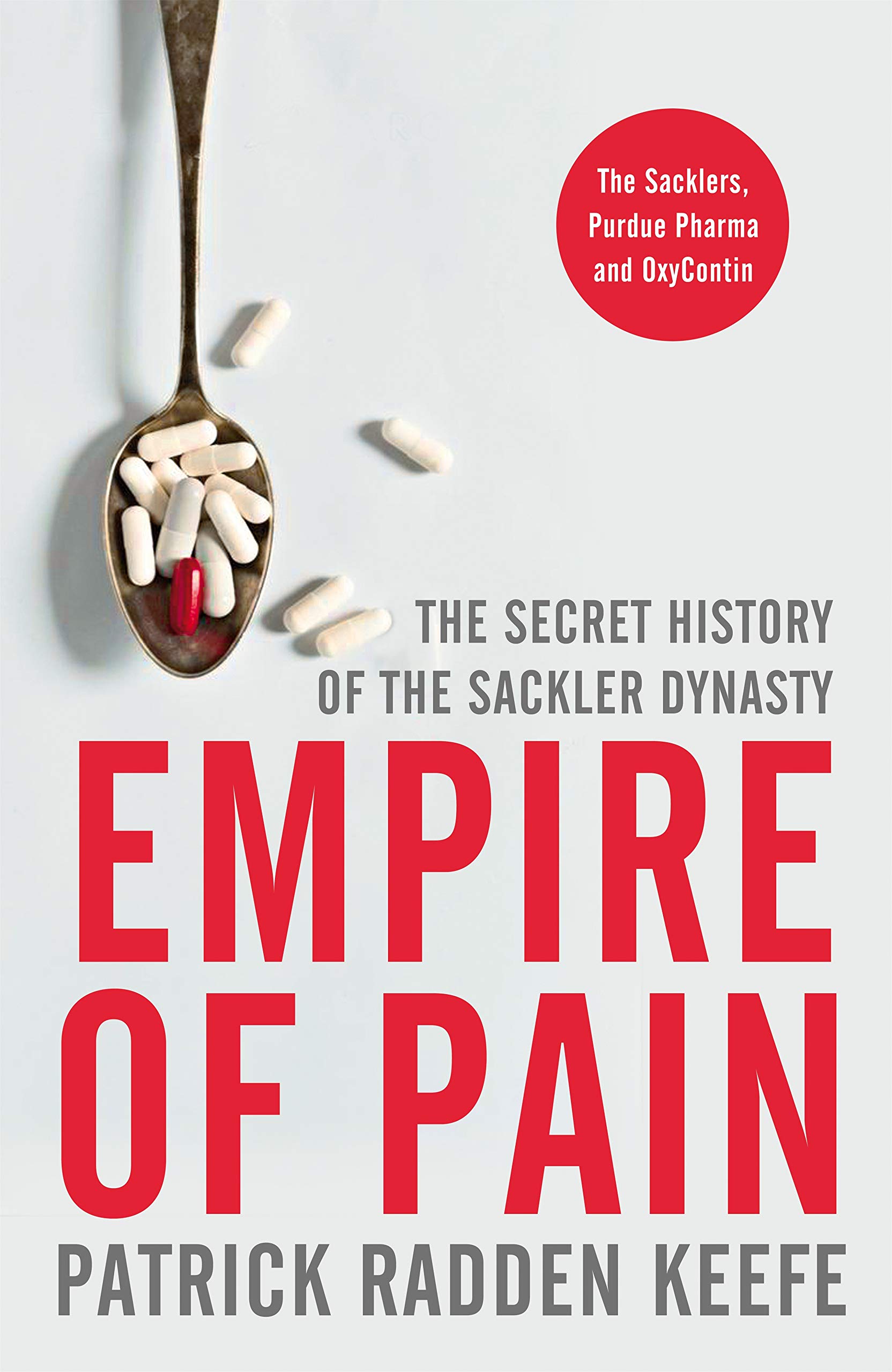If there is one non-fiction title I’ve been looking forward to reading for a while, it is this definitive story of the Sackler family and OxyContin, the drug that swept America, almost single-handidly creating the opioid crisis and creating addicts across America.
From a British perspective, while every crime show of the last dozen years has featured people dealing in “oxy”, perhaps the true horror of this story hasn’t really been understood.
Radden Keefe goes right back to the beginning explains the history of the Sacklers, one of the biggest arts patrons of the last fifty years, with galleries and extensions at some of the world’s biggest museums named after them.
Arthur Sackler was raised in mid-twentieth century New York, and was one of three brothers, the sons of immigrant parents who would all go to medical school. He was a “do-er” always working hard even while he was studying. This incredibly well researched book digs deep into how he got his footing in the pharmaceutical world, at the same time, secretly owning an pharmaceutical advertising company.
In 1952, the brothers bought a small pharma company called Purdue-Frederick. At the time it was mostly dealing with very run of the mill drugs. But as the twentieth century moved on, a new kind of drug began to emerge that would get widely prescribed to patients suffering all kinds of ailments. Valium was the big hit, and through Sackler’s advertising company and his ownership of a newspaper aimed directly as US doctors, he essentially created a type of advertising of drugs that was incredibly successful.
Empire of Pain gets into the complexities of the Sackler family – with multiple marriages and children between the three brothers, and then their own kin taking control of the family.
It was only after the death of Arthur Sackler than Purdue, via another acquisition, nade the breakthrough of creating a slow-release version of an opioid pain relief pill. Doctors had been rightly concerned about using opioids with patients. They knew that they were excellent in fighting pain, but also knew that addiction was easy. After all, entire wars had been fought for opium!
What the Sacklers and Purdue were now saying is that with their new kind of release mechanism, it was much safer, and opioids shouldn’t simply be used for end-of-life pain release – terminal cancer. They got US FDA approval for their drug – the implication being through backhanders – and used some very suspect “proof” to show that their drug was safe and wouldn’t create addicts.
OxyContin would become a blockbuster drug. Purdue took on an enormous sales force who were heavily incentivised to push the pills to all and sundry. Their bonuses were “uncapped” meaning that the more they sold, the more they made. The “toppers” amongst them would win annual expenses paid luxury holidays. A successful salesperson could earn six figure salaries.
And in the meantime, patients were getting hooked. Higher strength pills were released, and people upped their doses. Unscrupulous pharmacies were known as “pill mills”, prescribing thousands of tablets. Criminals would bus in “patients” to garner as many pills as possible. The drugs had a street value. Purdue and the Sacklers knew this, but did nothing. Indeed, the family became fantastically rich and were always looking for how to continue to keep their drugs under patent, the profits likely to fall precipitously once generic versions were available. At one point, they were trying to argue that the pills should be available without prescription at all in Germany!
In due course, even the pills weren’t enough, and many would turn to heroin, with Mexican cartels seeing an increased demand and fulfilling that need. More than 500,000 people died in the US.
This book is remarkable. It tells the story with clarity, and the research is admirable. The author has dug deep into over many years, and he brings us right up to date with the deal that Purdue finally struck in federal court, with bankruptcy an option to avoid paying a multi-billion dollar fine. The Sackler family, naturally, had removed as much money from the company as it was able to.
Today, the “Sackler” name is much better understood as having brought misery to so many. Although this does feel a very American story – the drug was not as available in other countries. So perhaps visitors to some of the UK’s finest art institutions aren’t as aware of terror this family has collectively heaped on so many.
This remarkable book should go a long way to explaining that.

